15
2023
-
09
Finowicam Unlocks Disease Immune Space Group and Helps "Major Research Project of Immune Digital Decoding"
On August 28, 2023, the National Natural Science Foundation of China issued the 2023 annual guidelines for major research projects on immunity digital decoding. The guideline proposes research funding directions for immune digital decoding, which includes obtaining immune signals for major diseases before organic lesions, and establishing accurate diagnostic and prognostic evaluation criteria based on immune decoding.
On August 28, 2023, the National Natural Science Foundation of China issued the 2023 annual guidelines for major research projects on immunity digital decoding. The guideline proposes research funding directions for immune digital decoding, which includes obtaining immune signals for major diseases before organic lesions, and establishing accurate diagnostic and prognostic evaluation criteria based on immune decoding.
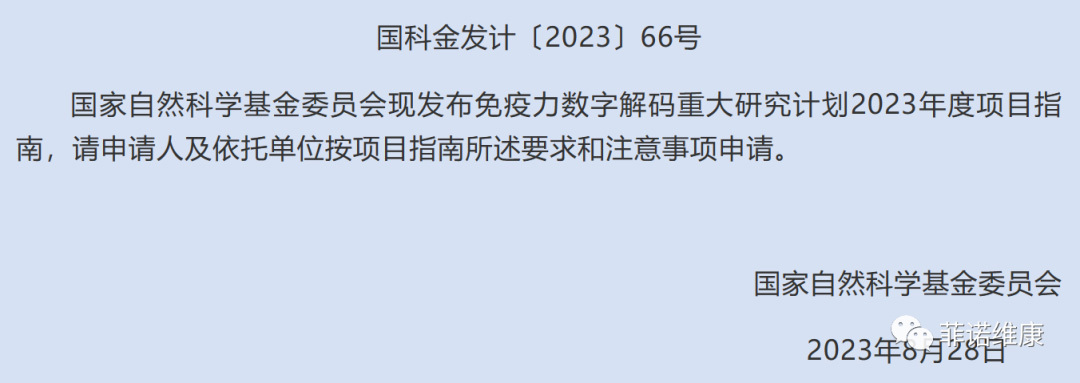
(III) disease diagnosis, treatment and health assessment based on immunity decoding.
To clarify the immune characteristics and evolution rules of major life and health events, to obtain the immune signals of major diseases before organic lesions, to establish disease molecular typing, precise diagnosis and treatment and prognosis evaluation standards based on immune decoding, and to integrate the concepts and methods of traditional medical syndrome identification and "preventive treatment", to build a disease early warning system, to assess the health status in time and to find early hidden dangers of diseases, it provides a theoretical basis for the immune intervention of key life processes.
As a company that develops space biology technology and next-generation pathology applications, Finowicam has long been committed to accurate diagnosis, treatment and prognosis evaluation of immune system diseases and tumors through next-generation space biology detection technologies (such as multiple immunofluorescence and RNAscope in situ hybridization).
Case Presentation
1
In the field of accurate diagnosis, accurate treatment and prognosis evaluation, Finowicam cooperated with many clinical and pathological experts in China to establish a panel suitable for multiple immunofluorescence detection for different tumors/immune system diseases, which is used to evaluate the immune microenvironment of related diseases and combine with immunotherapy to evaluate the efficacy of drugs (see the figure below).
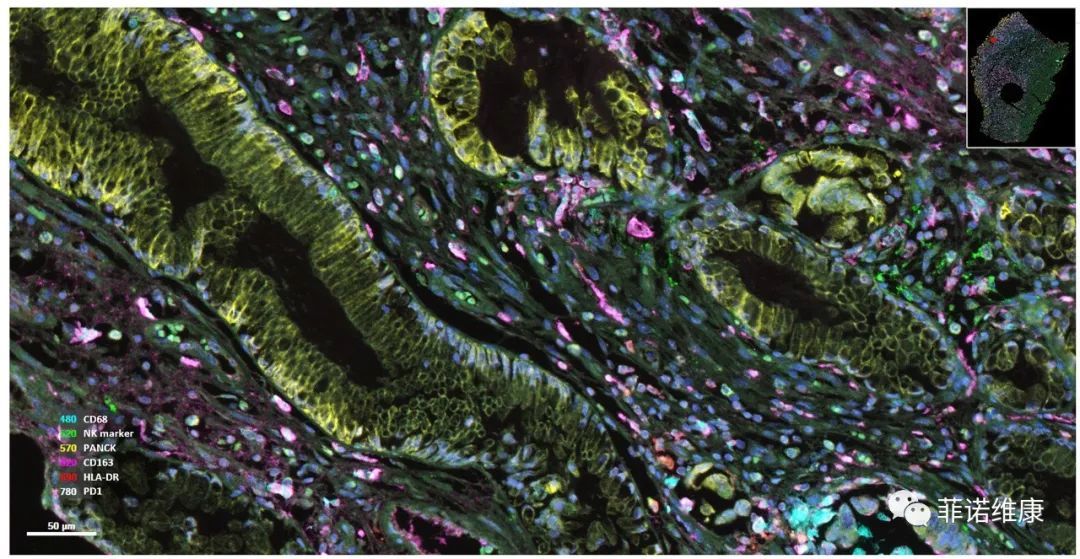
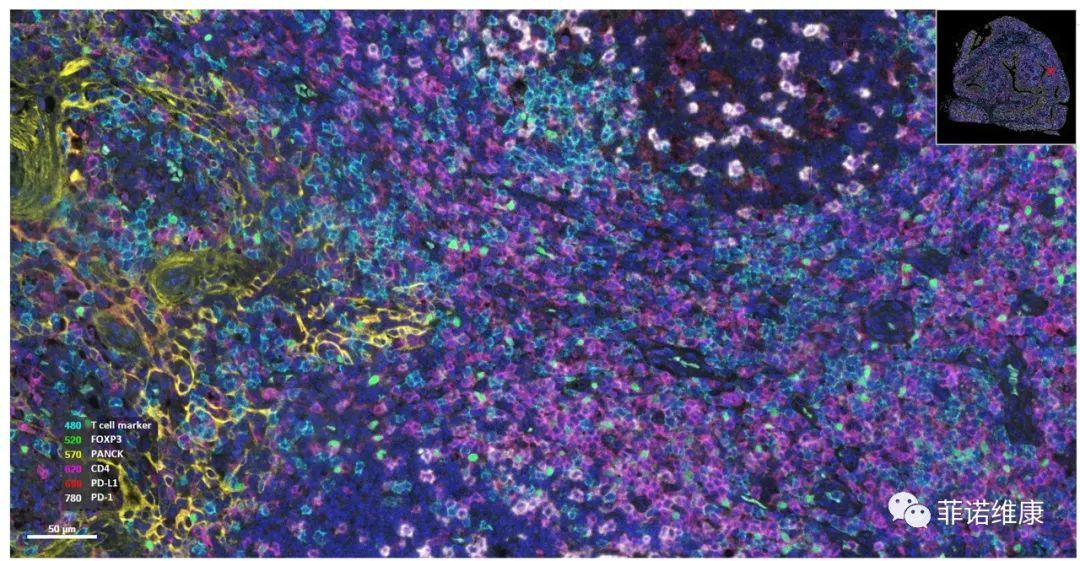
2
Based on the detection of multiple targets in the same slice, the interpretation of the results is the focus of digital decoding immune micro-immunity research. For this, Finowicam has a professional data analysis technology team, which uses Finowicam AI image analysis technology, which can realize from sample pathology assessment, to multi-dimensional data analysis, to the biological significance assessment of the results. The following figure shows the results of using Finowicam AI data analysis technology to identify H & E staining under visible light, immunohistochemical IHC, and tissue region segmentation.

The module established by Finowicam AI image analysis technology helps to automatically identify cell nuclei on H & E and IHC stained tissue sections-saving time for nuclear staining of multiple sections.
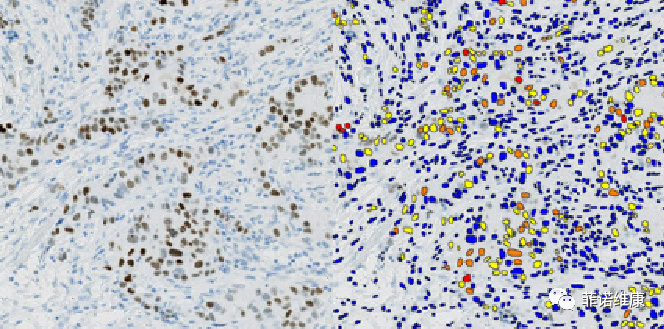
The analysis module for proprietary disease types established by Finowicam AI image analysis technology can perform cell recognition (classification region segmentation) and tissue region division.
Traditional analysis of this type is not only very time-consuming, but also requires a high degree of professionalism for those who observe and interpret the results,
And it is prone to the result deviation caused by the supervisor's judgment error. AI automated analysis can avoid such problems.
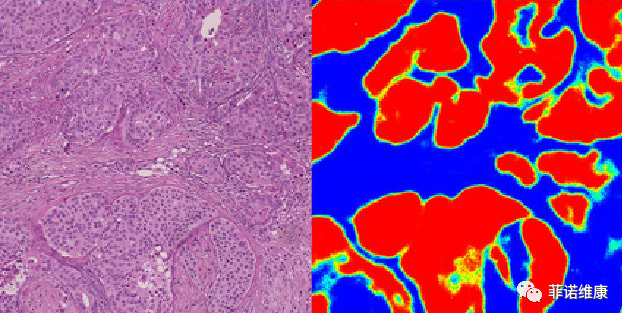
Fenowicam AI image analysis technology builds modules that enable objective and repeatable results analysis for any quantitative cell type analysis, such as tumor and stromal segmentation.
3
In the results of multi-target co-detection (as shown in the figure below), after professional pathological reading of the results, Finowicam AI image analysis technology can perform data analysis (B) for selected areas or whole slices of the customer's interest circle. Data analysis includes cell identification (d-e), positive cell identification of single and multiple targets (phenotype identification, f-g), spatial distance analysis (h-k), and spatial positioning and correlation analysis of related cells within different distances around a specific cell or a specific tissue.

Through the use of Finowicam AI image analysis technology, we can not only identify tissue cells, but also realize phenotype analysis, spatial neighborhood analysis, molecular function research, and more high-order analysis (see the figure below).
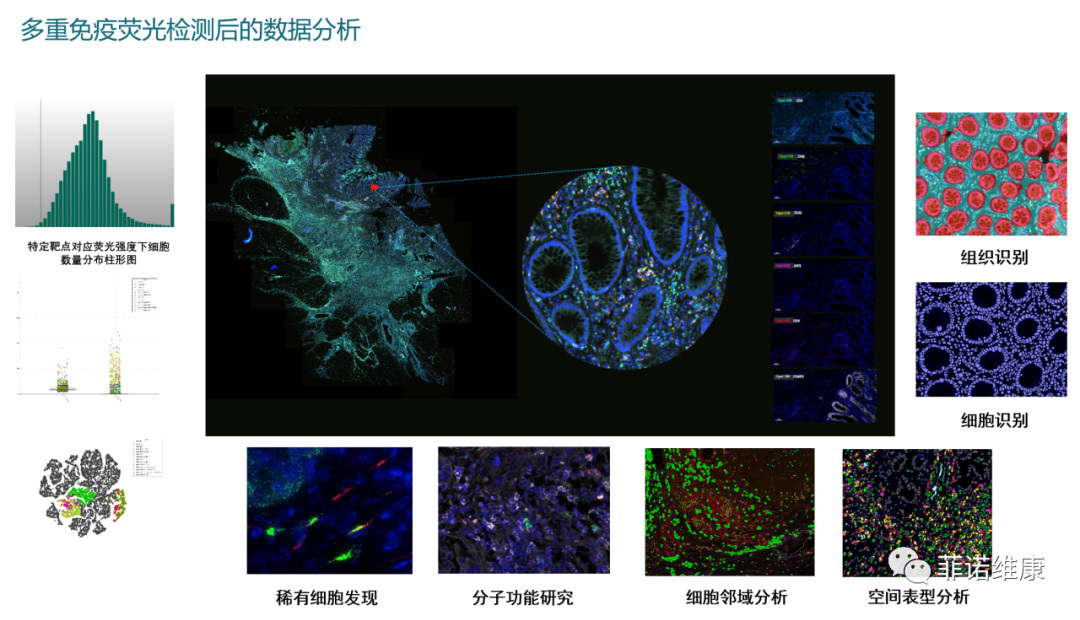
To sum up, Beijing finoweikang biotechnology co., ltd. has the ability to unlock disease immune space omics and help the "major research project on immunity digital decoding". it is expected to contribute to the realization of deciphering immunity codes, promoting accurate diagnosis and treatment, and serving the "healthy China" strategy.
Key words:
Latest information






